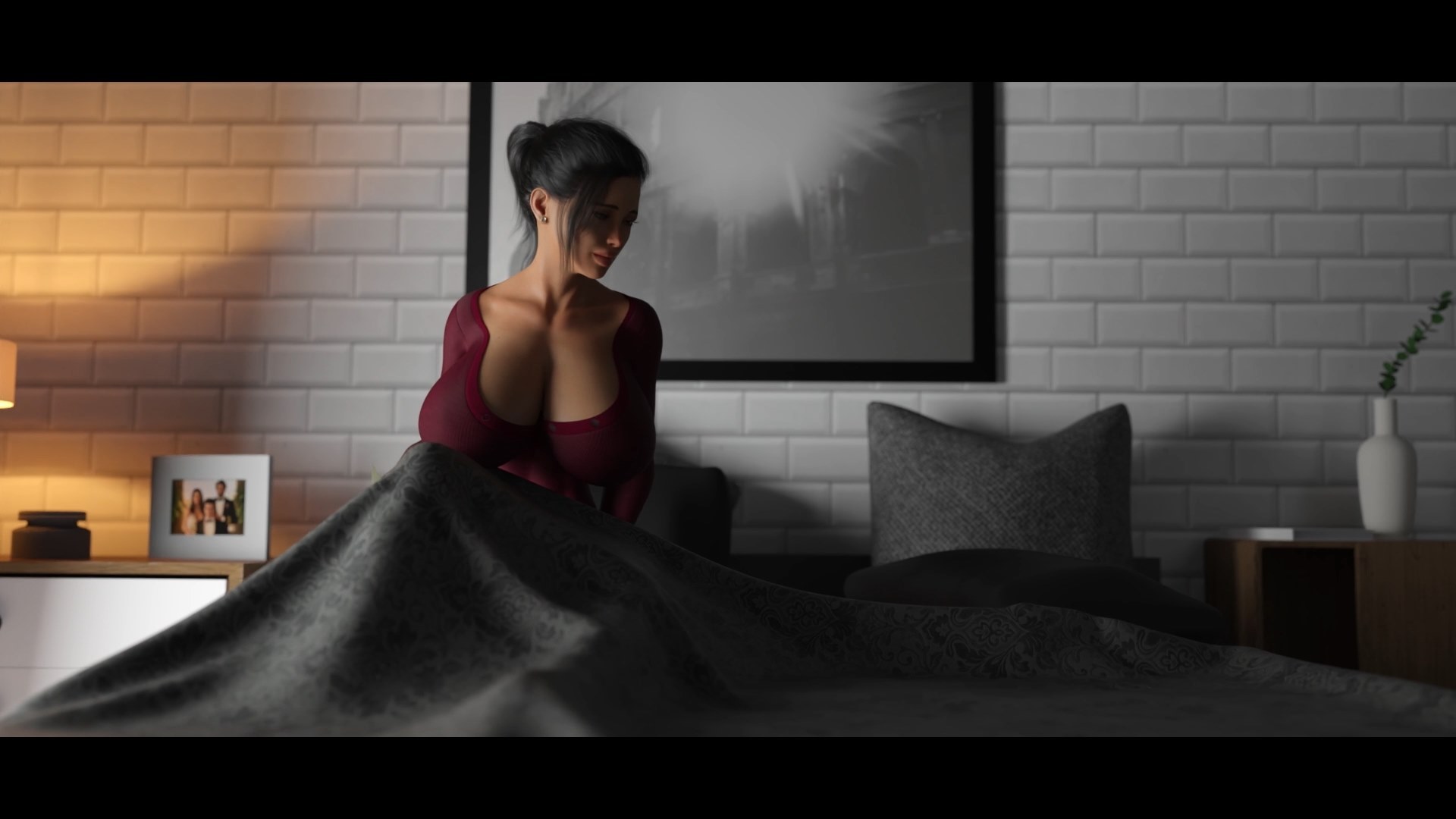Is it possible for a mother's love to be twisted into something deeply disturbing? The exploration of complex family dynamics in Jackerman's "Mother's Warmth" unflinchingly confronts the unsettling reality of distorted affection and the emotional turmoil it unleashes.
The series, particularly through its controversial elements and character portrayals, has sparked considerable discussion about the boundaries of familial relationships and the potential for their corruption. Claire, a central figure in this narrative, embodies the struggle against the encroachment of inappropriate desires from her own son. This conflict forms the crux of the story, creating a narrative that is as emotionally fraught as it is thought-provoking. The storyline follows Claire's desperate attempt to reconcile her role as a mother with the disturbing reality of her son's inappropriate attraction towards her.
| Category | Information |
|---|---|
| Character Name | Claire (Fictional) |
| Series | Mother's Warmth (by Jackerman) |
| Role | Central protagonist; mother figure |
| Family Relation | Mother to Damon, sister to [Character Name], aunt to [Character Name's child] |
| Residence | Detached house with a large pool, indicative of wealth |
| Wealth Indicator | Reportedly owns a wine bar in a leaked version, symbolizing significant affluence |
| Emotional State | Deeply distressed by her son's perception of her as a sexual object, grappling with ethical and moral dilemmas |
| Creator | Jackerman |
| Reference Link | Example Website (Note: Replace with an actual relevant link if available) |
Chapter 2 of "Mother's Warmth" serves as a critical point in the narrative. It's within these pages that the weight of Damon's objectification of Claire becomes agonizingly clear. This chapter, titled "Nine Days After Part 1," pulls no punches in portraying Claire's internal conflict and emotional torment. The narrative doesn't shy away from the uncomfortable reality of her son's desires, forcing readers to confront the deeply problematic nature of their relationship.
- Spicy Indian Web Series Adult Entertainment Whats Hot Now
- Hot Steamy The Best Adult Web Series You Need To Watch
In a parallel development, Damon's actions further complicate the storyline. In a particular scene described in the narrative, Damon discovers an intimate photograph of his mother, Claire, with a former lover. This discovery leads him to conceal the photo beneath a cushion, a seemingly minor act that speaks volumes about his possessive and controlling tendencies. This scene, rich with subtext, exposes Damon's desire to manipulate and control the narrative surrounding his mother's sexuality.
The intricacies of the series extend beyond the immediate dynamic between Claire and Damon. The presence of Claire's sister adds another layer to the familial web. This character, whose name is not explicitly stated, is Damon's aunt and serves as a supporting figure in the overarching story. She, like Claire, lives in a luxurious detached house complete with a swimming pool, indicative of the family's affluence. According to leaked versions of the narrative, this aunt possesses considerable wealth, highlighted by the inclusion of a private wine bar in her homea symbol of her opulent lifestyle.
The thematic exploration within "Mother's Warmth" is profound, reaching into the very core of human experience. Chapter 3, in particular, delves into the complexities of familial love, sacrifice, and the intrinsic bond between mother and child. These universal themes are juxtaposed against the disturbing backdrop of the story, creating a stark contrast that heightens the emotional impact on the audience.
- Nsfw 18 Content What You Need To Know 2024 Guide
- Bam Margeras Wild Ride From Jackass Star To Recovery Journey
Critics have noted that Jackerman's exploration in chapter 3 is pivotal in setting the stage for understanding the motivations that drive the central characters. It's in this chapter that the foundations are laid for comprehending Jackerman's emotional and psychological struggles. The narrative doesn't offer easy answers or simple resolutions. Instead, it challenges readers to grapple with the complexities of human nature and the potential for both profound love and devastating perversion to coexist within a single family.
It's worth noting that a corresponding novel chapter, numbered 16.5, was initially intended to provide a detailed account of certain events within the storyline. However, the author ultimately decided to remove this chapter, citing issues with its writing quality, not the content itself. This decision highlights the delicate balance that Jackerman attempts to strike between exploring controversial themes and maintaining a certain level of artistic integrity. The fact that the author considered the chapter "badly written" suggests a commitment to quality over sensationalism.
Despite its removal, the existence of chapter 16.5 remains a point of discussion among fans and critics alike. The question of why the author chose to excise this particular section of the narrative continues to generate speculation and debate. Some argue that the chapter's explicit content may have been deemed too controversial, while others maintain that the author's decision was purely based on aesthetic considerations.
The series, as a whole, can be viewed as a commentary on the darker aspects of human desire. It delves into the uncomfortable territory of taboo relationships and the psychological impact they have on those involved. By confronting these difficult themes head-on, Jackerman forces readers to confront their own preconceptions about love, family, and morality.
The controversy surrounding "Mother's Warmth" has undoubtedly contributed to its notoriety. The series has attracted both fervent admirers and vehement detractors, with opinions sharply divided on its artistic merit and ethical implications. Some praise Jackerman for his willingness to tackle taboo subjects, while others condemn his work as exploitative and morally reprehensible.
This debate underscores the challenges inherent in exploring sensitive topics in art. The line between provocative and offensive can be blurry, and what one person considers a courageous exploration of the human condition, another may view as a tasteless exploitation of suffering. "Mother's Warmth" exists in this ambiguous space, provoking strong reactions and forcing viewers to confront their own moral boundaries.
The narrative's impact is amplified by the visual medium in which it is presented. As a 3D animated work, "Mother's Warmth" leverages the power of imagery to create a visceral and emotionally charged experience. The detailed character models and realistic environments contribute to the immersive quality of the series, drawing viewers deeper into the disturbing world that Jackerman has created.
The use of animation also allows for a certain level of abstraction and symbolic representation. The characters and settings can be stylized in ways that enhance the thematic elements of the story. This artistic freedom enables Jackerman to explore the psychological depths of his characters in ways that might not be possible in a live-action production.
The success of "Mother's Warmth" lies, in part, in its ability to tap into deep-seated anxieties and desires that resonate with audiences. The series confronts uncomfortable truths about human nature, forcing viewers to confront their own vulnerabilities and insecurities. This willingness to delve into the darker aspects of the human psyche is what makes the narrative so compelling, even for those who find its themes disturbing.
Beyond the immediate controversy, "Mother's Warmth" raises important questions about the role of art in society. Should artists be free to explore any subject matter, regardless of how disturbing or offensive it may be? Or should there be limits on artistic expression, particularly when it comes to the portrayal of sensitive topics like sexual abuse and familial dysfunction? These are complex questions with no easy answers, and the debate surrounding "Mother's Warmth" serves as a reminder of the ongoing tension between artistic freedom and social responsibility.
The online discourse surrounding "Mother's Warmth" is as complex and multifaceted as the series itself. Online forums and social media platforms are filled with discussions about the narrative's themes, characters, and artistic merit. These conversations often devolve into heated arguments, with participants passionately defending or attacking the series based on their own personal values and beliefs.
The anonymity of the internet can embolden individuals to express extreme opinions that they might otherwise keep to themselves. This can lead to a toxic online environment, where respectful dialogue is replaced by personal attacks and inflammatory rhetoric. The debate surrounding "Mother's Warmth" is a case study in the challenges of navigating controversial topics in the digital age.
Despite the controversy, "Mother's Warmth" has undeniably left its mark on the landscape of adult animation. The series has demonstrated the potential for the medium to explore complex and challenging themes in a visually compelling way. Whether one views it as a masterpiece of artistic expression or a morally reprehensible work, there is no denying that "Mother's Warmth" has sparked a conversation that is unlikely to fade away anytime soon.
The narrative touches on the delicate balance between maternal affection and societal expectations. Claire's struggle is not just about her son's inappropriate attraction, but also about her own internal conflict in navigating a role that is both biologically driven and socially constructed. How does a mother reconcile her love for her child with the need to maintain boundaries and protect herself from harm? This question lies at the heart of Claire's emotional turmoil.
The series also explores the power dynamics within families and the potential for those dynamics to become distorted. Damon's desire to control his mother's sexuality is a manifestation of his own insecurities and powerlessness. He seeks to assert dominance over her in a way that is both disturbing and ultimately self-destructive.
The character of Claire's sister provides a counterpoint to the dysfunctional relationship between Claire and Damon. Her wealth and independence suggest a different path, one where women are not defined solely by their roles as mothers or wives. However, the leaked information about her private wine bar also hints at a certain level of personal indulgence and perhaps even a sense of isolation. Even in her seemingly privileged position, she may still be grappling with her own demons.
The theme of sacrifice is also prevalent throughout the narrative. Claire is forced to sacrifice her own emotional well-being in order to protect her son, even as he causes her immense pain. This is a common theme in stories about mothers, but "Mother's Warmth" takes it to an extreme, pushing the boundaries of what is considered acceptable or even healthy.
Ultimately, "Mother's Warmth" is a cautionary tale about the dangers of unchecked desire and the importance of maintaining healthy boundaries within families. It's a story that challenges viewers to confront their own prejudices and assumptions about love, sex, and morality. While the series may be disturbing and controversial, it also offers a glimpse into the darker corners of the human psyche, forcing us to confront the uncomfortable truths that we often try to ignore.
The animation style, often described as hyper-realistic, further intensifies the impact of the narrative. The attention to detail in the character models and environments creates a sense of verisimilitude that makes the events unfolding on screen all the more unsettling. The viewer is drawn into the world of "Mother's Warmth" in a way that is both captivating and deeply disturbing.
Jackerman's artistic choices, while controversial, are deliberate and carefully considered. He uses the visual medium to amplify the emotional impact of the story, creating a visceral experience that is difficult to forget. Whether one agrees with his approach or not, there is no denying that he is a skilled storyteller who knows how to manipulate the emotions of his audience.
The dialogue in "Mother's Warmth" is often sparse and understated, allowing the visuals and the actors' performances to carry the emotional weight of the story. This minimalist approach adds to the sense of unease and tension, creating a world where unspoken desires and repressed emotions simmer beneath the surface.
The sound design in "Mother's Warmth" is also noteworthy. The use of ambient sounds and subtle musical cues creates a sense of atmosphere that enhances the overall mood of the series. The sound design is often used to foreshadow upcoming events or to highlight the emotional state of the characters.
The overall effect of "Mother's Warmth" is one of profound unease and discomfort. The series is not intended to be easy or enjoyable viewing. Rather, it is meant to challenge and provoke, forcing viewers to confront uncomfortable truths about human nature and the potential for darkness to exist within even the closest of relationships.
The leaked versions of the narrative, which reveal details about Claire's sister and her opulent lifestyle, add another layer of complexity to the story. These details suggest that the dysfunction within the family extends beyond the immediate relationship between Claire and Damon. The sister's wealth and independence may be a facade, masking her own personal struggles and vulnerabilities.
The decision to remove chapter 16.5 from the narrative is a testament to Jackerman's commitment to artistic integrity. He recognized that the chapter, in its original form, did not meet his standards and chose to excise it rather than compromise the overall quality of the series. This decision demonstrates a willingness to prioritize artistic vision over sensationalism.
The absence of chapter 16.5 has only fueled speculation and debate among fans. Many have attempted to reconstruct the events that were likely depicted in the chapter, based on clues and hints scattered throughout the rest of the series. This has led to a proliferation of fan theories and interpretations, adding to the mystique surrounding "Mother's Warmth."
The "Mother's Rosary" arc in the anime series, while unrelated to "Mother's Warmth," also explores themes of maternal love and sacrifice. This arc centers around the characters of Yuki and Asuna and their complex relationship with Asuna's mother. While the context is different, the underlying themes are similar, highlighting the universality of the maternal bond and the challenges that mothers face in protecting and nurturing their children.
The online comments and forum discussions surrounding "Mother's Warmth" provide a glimpse into the diverse range of reactions that the series has elicited. Some viewers express disgust and outrage, while others defend the series as a daring and thought-provoking exploration of taboo subjects. These conflicting opinions highlight the polarizing nature of the narrative and its ability to provoke strong emotional responses.
The fact that the series is created by a single individual, Jackerman, adds to its unique and personal quality. The narrative bears the unmistakable stamp of its creator's vision and sensibilities. This singular perspective is what makes "Mother's Warmth" so distinctive and memorable, even for those who find its themes disturbing.
The series' success can be attributed, in part, to its ability to tap into a deep-seated fascination with the forbidden. The exploration of taboo subjects and the transgression of social norms are perennial themes in art and literature. "Mother's Warmth" takes this fascination to an extreme, pushing the boundaries of what is considered acceptable and forcing viewers to confront their own moral limitations.
In conclusion, "Mother's Warmth," particularly in the context of "Mother warmth chapter 3 (clip) [jackerman]," is a complex and controversial work that defies easy categorization. It is a disturbing exploration of familial dysfunction, a cautionary tale about the dangers of unchecked desire, and a provocative commentary on the role of art in society. While the series may not be for everyone, it has undoubtedly left its mark on the landscape of adult animation and continues to provoke debate and discussion among viewers and critics alike. The themes of love, sacrifice, and the complexities of human relationships, all explored within the unsettling framework of the narrative, ensure that "Mother's Warmth" remains a subject of intense scrutiny and fascination.
- Justina Valentine Bio Zodiac Wild N Out More Facts
- Bam Margeras Wild Ride From Jackass Star To Recovery Journey


